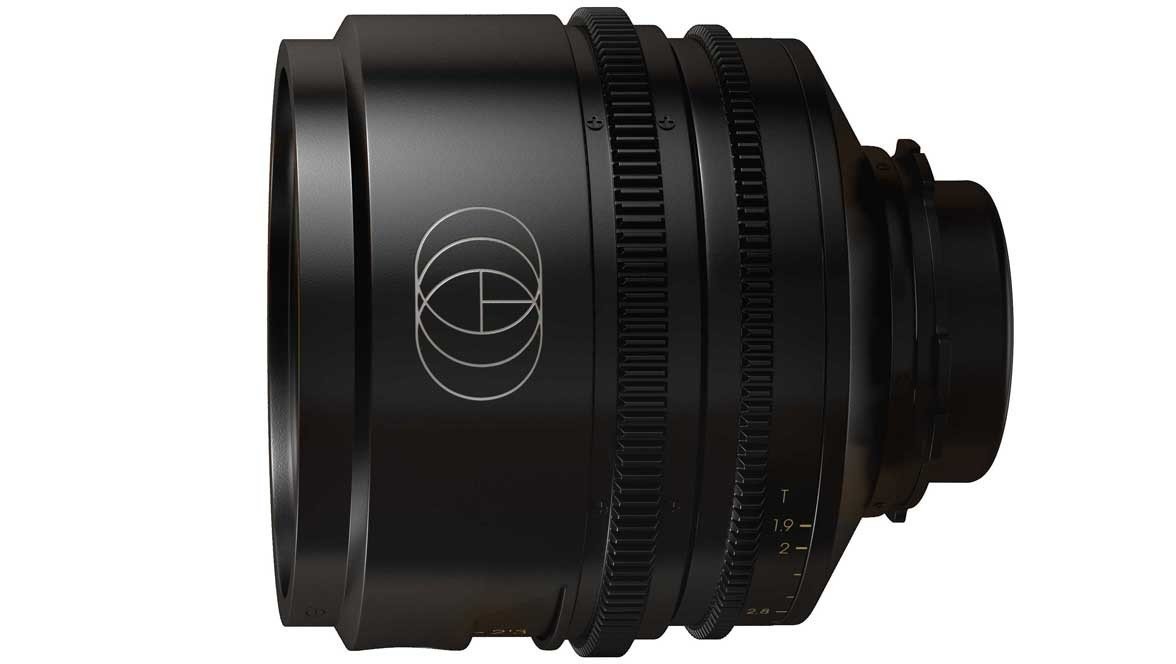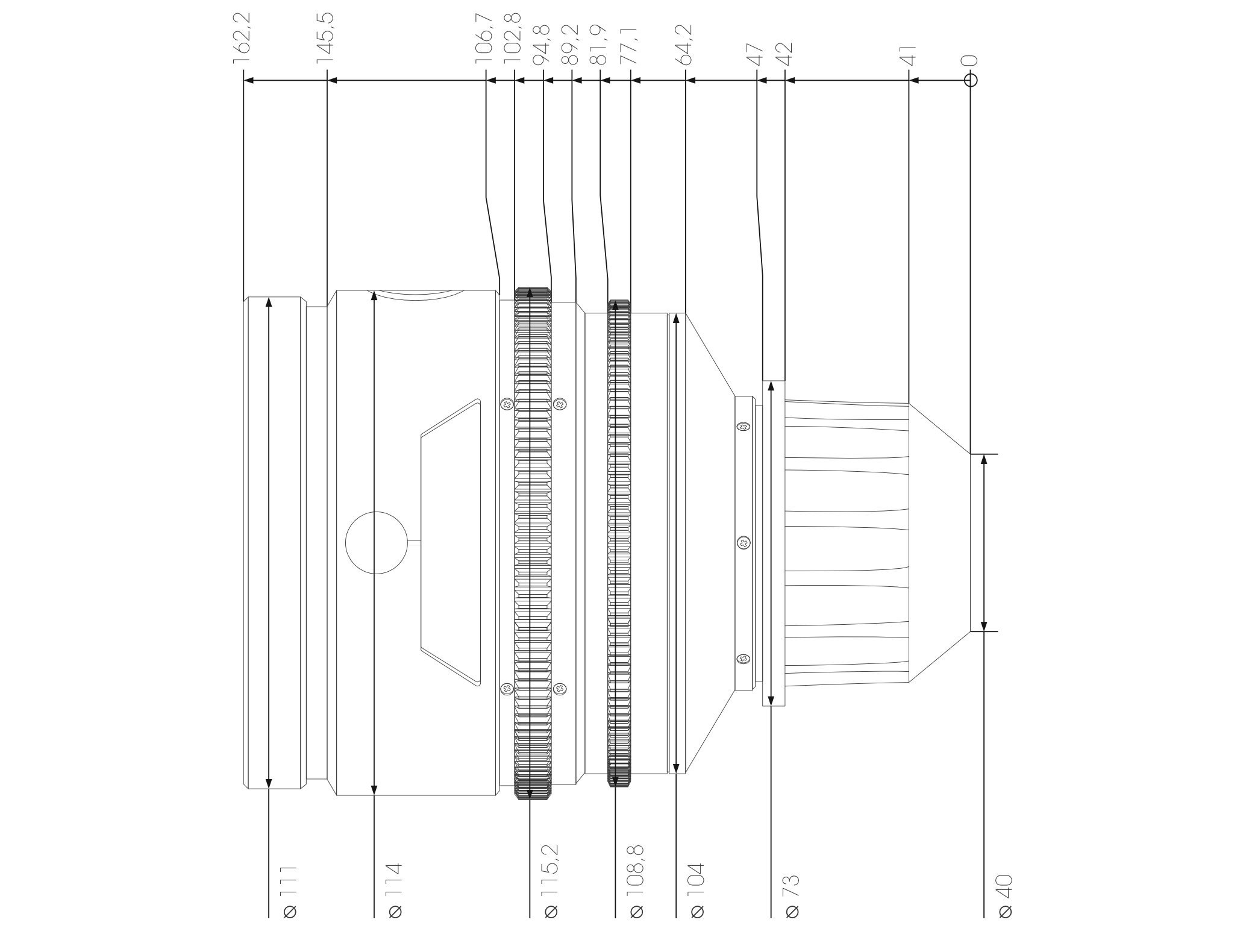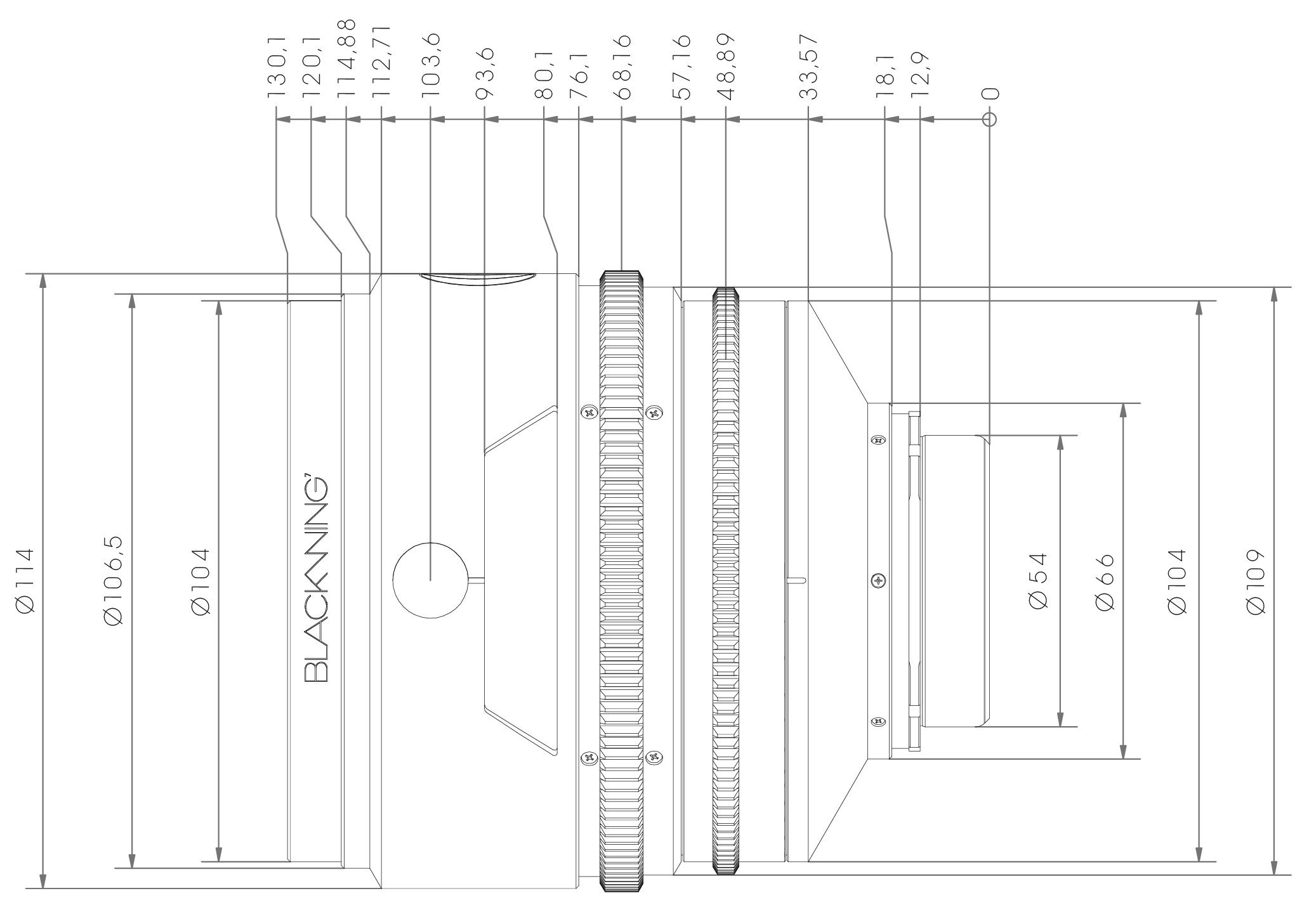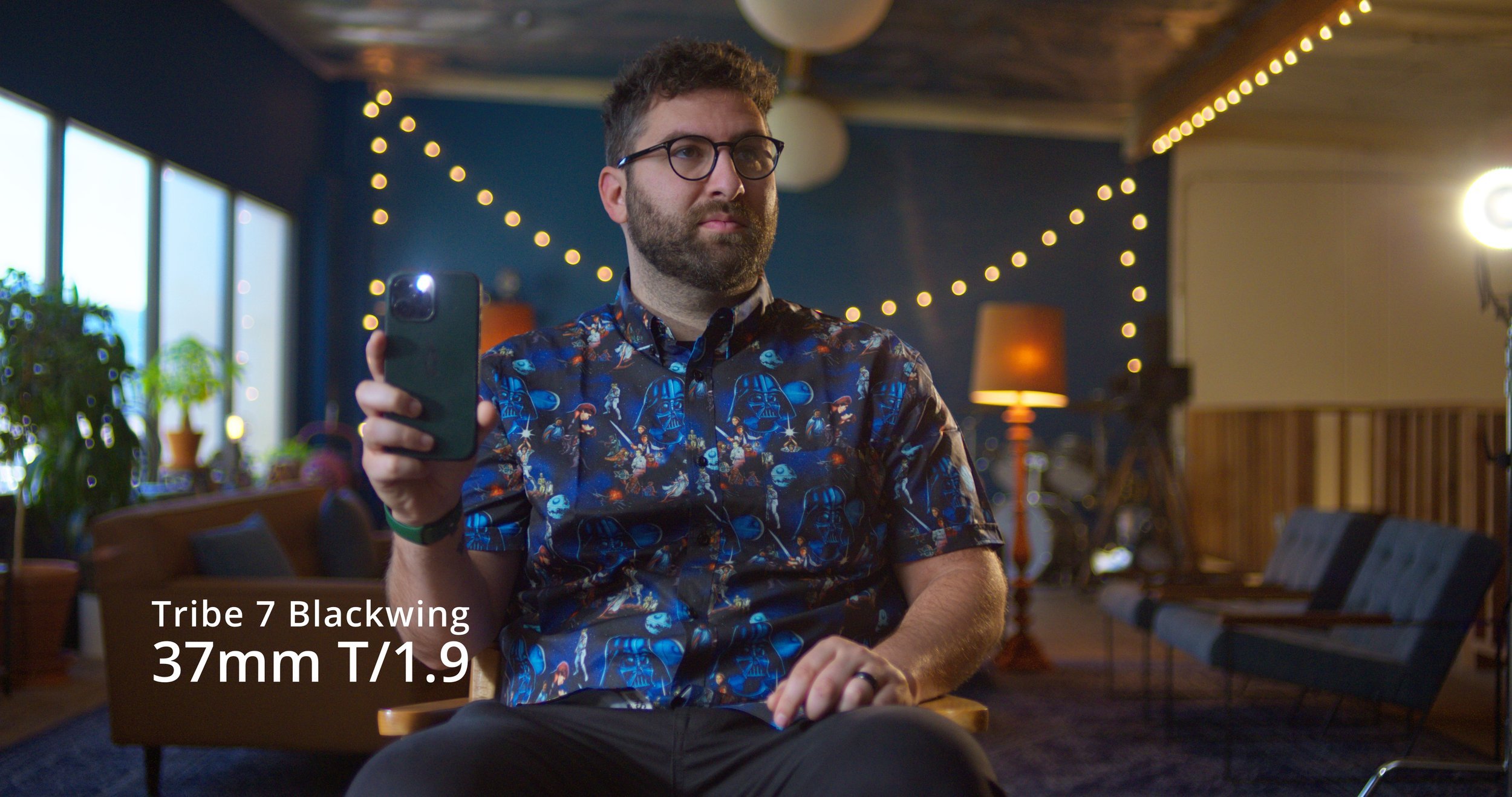Sony Venice 2 - Tribe7 T-Tuned Blackwing7 Full Frame Lens Test
Today I’m sharing a lens test of Tribe7 T-Tuned Blackwing7 lenses paired with the Sony Venice 2. The purpose of this lens test was to determine whether I want to use these lenses for an upcoming project and to build out my library of knowledge about full-frame spherical lenses. Thanks to my friend Nick Mahar for joining the test and sitting in for me!
I was originally going to test the Blackwings on the Sony Venice 2 and the Canon C500 MkII camera, but on the day of the test, the C500 camera had been rented out for a shoot. It was great to be able to get hands-on experience with the Venice 2, however! During the testing period, I also looked at 4 other sets of lenses: Zero Optik rehoused Olympus OM, Ancient Optics/GL Optics Rehoused Minolta Rokkor, Ancient Optics rehoused Voigtländer 36mm-82mm Zoomar, and the Canon K-35 25mm-120mm, which will be discussed separately in upcoming blog posts.
Given that I looked at so many different lenses during this test, I opted not to test every focal length in the set. If there are any focal lengths you’re curious to see let me know in the comments section!
Camera Settings:
Camera: Sony Venice 2
Recording Resolution: 8.2K 17:9 (8192 x 4320)
Codec: X-OCN LT
Color processing: Sony S-Gamut3.Cine / S Log3 to Rec709 / Gamma 2.4 color space transform.
ISO: 800
FPS: 23.98p
Timestamps
Tribe 7 Blackwing7
20.7mm T/1.9 00:09 - 02:23
37mm T/1.9 02:23 - 04:51
57mm T/1.9 04:51 - 05:55
77mm T/1.9 05:55 - 08:50
137mm T/1.9 08:50 - 11:26
Tribe 7 Blackwing7 - T Tuned
Tribe 7 T Tuned Blackwing 7 Lenses in a custom Interspace Case
Tribe 7 T Tuned Blackwing 7 Technical Specifications Sheet
- Old Fast Glass
Brushed Aluminum BLACKWING7 Binary
What does “T-Tuning” mean?
The Blackwing7 lens tuning options include:
S-Tuning: Features overall higher contrast of the three tuning options, with reduced flare characteristics and with less roll-off across the frame.
T-Tuning: Utilizes vintage-style single-layer coatings. T-tuned lenses have a profile which further softens the roll-off to the edge of the frame, and provides increased edge detail halation. T lenses are designed to capture a slightly softer, artistic image, with a higher degree of light reactivity and flaring characteristics are harder and more prominent than with the S-tuned version.
X-Tuning: Offers the lowest contrast option with even further exaggerated edge halation and a slight degree of induced SA and plane curvature. It also employs selective edge uncoating to also assist in further reducing contrast.
B-Tuning: These lenses have the same multi-coated lens elements from the "S" tuned range, so they perform the same in terms of light management and flare control. "B" tuned lenses exhibit a green/blue ghost flare and the optics have the edge-uncoating from the "X" tuned range, so they are lower in contrast. These lenses have the same optical prescription as the "T" tuned lenses giving them similar characteristics when stopped down.
Lens Notes
Blackwing7 20.7mm T/1.9
I was really impressed by the 20.7mm Blackwing7 - it had very minimal distortion for being such a wide lens, and the fact it remains at a consistent T/1.9 stop as the rest of the lenses in the set is impressive. The 7.5” Close Focus is fantastic too for when you need that wide-lens-close-up look.
View fullsize
Tribe7 Blackwing7 20.7mm T/1.9 Lens Flare
This lens had fairly minimal, warmer flares with a subtle narcissism flare on the outer edges of the frame.
What the heck is a Narcissism Flare? “A Narcissism is the result of a light reflection off of the internal mechanics of the lens causing flare. This contaminating artifact can manifest itself as a ring-flare or a halo around a bright highlight in the image. This is generally light reflection off the inner barrel, the edge of a glass element, or an internal metal baffle. These types of flares can also be induced in a lens by removing element edge blacking (varnish), or by adding a gloss varnish to the inner surface of the lens barrel. The more specular the surface is, the more chance of having light reflection leading to greater flare. Over time, the edge blacking vamishing of individual elements can deteriorate and real spotty gaps that can accentuate flare. This type of flare is most accentuated with a light source in the shot pointed directly down the axis of the lens.”
- Jay Holben and Christopher Probst ASC, The Cine Lens Manual (Adakin Productions Press, 2021), p.168.
Blackwing7 37MM T/1.9
Veiling glare corrected in DaVinci Resolve.
INSPIRATION: 1950’s retrofocus construction - R1 Angenieux 35mm f/2.5 (Tribe7)
The 37mm Blackwing was one that stood out from the rest of the set, compared to the 20.7mm tested before it, the flares were much more dramatic. This example is unfortunately a bit of an outlier, as the backlight appears to have been not completely flagged off from the lens, causing veiling glare which makes the lens appear warmer toned with reduced contrast, which I do not believe normally to be the case. I’ve included a corrected example above.
The flares on this lens bloom beautifully, and showcase the T Tuned’s unique coating really nicely. When hit at a certain angle this lens shows off a subtle but pleasant “rainbow” or “eyelash” flare on the edges, which I’m always a big fan of.
What the heck is an Eyelash Flare?: “A product of light refracting off the edges of elements in the lens. This edge refraction creates a circular rainbow effect that is similar to the spectral distribution that happens when light passes through a prism. Because it is striking the edge of the element, it can also take on a striation pattern that looks a bit like light eyelashes.”
- Jay Holben and Christopher Probst ASC, The Cine Lens Manual (Adakin Productions Press, 2021), p.171.
Blackwing7 57MM T/1.9
The 57mm Blackwing was perhaps my favorite focal length of the set. The flares on this lens were the most noticeable and I really enjoyed the way the bokeh on the edges slightly vignettes with some really interesting and subtle chromatic aberration around the edges of the out of focus elements. This lens had the most pleasing and unique falloff in the background for me.
Slight veiling glare from the backlight causes the lens to appear warmer with reduced contrast.
Dehazed and color-matched in post using DaVinci Resolve.
This example is also unfortunately a bit of an outlier, as the backlight appears to have been not totally flagged off from the lens, making the lens appear warmer with softer contrast, which I do not believe normally to be the case.
One of my favorite characteristics of this lens is how it flares - very strong rainbow/eyelash flaring and the veiling flares on this are less saturated than the 37mm before it. I really liked how the light sources bloom on this lens as well. Overall I think this lens is one of my favorites from the range I tested.
Blackwing7 77mm T/1.9
The 77mm Blackwing lens in this set is a gorgeous portrait lens, with a really gorgeous soft roll-off and very minimal flares. It should be noted that I had not found the flashlight used for testing the flares in the other lenses at this point.
Blackwing7 137mm T/1.9
The 137mm T/1.9 lens has some interesting character to it, with a relatively low contrast and minimal flares, but more pronounced chromatic aberration in high contrast areas (see below).
Chromatic aberration on the leaves against the window.
Minimal flares at the angle we had the light set up.
Final Thoughts
Modern optics with an unexpected amount of character.
The lenses are very well constructed and both the focus and iris rings are incredibly smooth.
Unique saturated flares with a beautiful coating.
Pleasing falloff of the background.
Renders skin tones nicely.
Chromatic aberration is noticeable throughout the range - not always desirable for my taste.
Practical shooting example
Netflix’s “I Care A Lot” was filmed with Sony Venice & Tribe7 Blackwing lenses (IMDb)
Disney+ “Obi Wan Kenobi” was filmed with Arri Alexa LF, Cooke Anamorphic/i FF, Xelmus Apollo lenses and Tribe7 Blackwing7 lenses. (IMDb)
Is there anything else you’d like to see in a future test? Have you shot with these lenses? Let me know in the comments section, I’d love to hear about your experiences with them!
More info on Tribe7 Blackwing7 lenses
Purpose-designed for large format motion picture imaging, BLACKWING7 lenses from TRIBE7 represent an entirely new range of tuned optics for contemporary film makers to use within their creative story telling.



BLACKWING7 optics exhibit unique imaging properties which arise from the introduction of controlled distortion during the development and manufacturing processes. This distortion is modular and allows a level of tuneability over key parameters which shape many creative characteristics of the lenses.
The lens range comprises a set of [8] focal lengths – with three tuning options per focal length.[…] BLACKWING7 lens tuning allows parameters such as sharpness, contrast, roll-off, spherical aberration, field curvature, edge halation and flare to be modified to provide sets of “curated” optics to suit the personality and intent of the owner.
Many of the design cues for BLACKWING7 primes originate in optics manufactured during the 1930 - 1960s, but the real inspiration behind the lenses lies in the evolutionary nature of experimental music and audio synthesis, and the process of creating distortion through sound amplification.
Conceptually, the ability to tune each BLACKWING7 lens is identical to how EQ adjustment is used in music production - to control the range, or shape of tonality in specific bands across the audio frequency spectrum. The image produced by a BLACKWING7 lens can be described as having a musical fidelity to it; with each focal length having an underlying level of distortion which can be controlled to produce strong artistic resonances including unique flaring characteristics.
Ten sets of BLACKWING7 BINARIES were created by TRIBE7 to help introduce the film making community to the concept of audio merging into imaging. These limited-edition BINARIES are named in recognition of creative imaging not being a black or white process – film makers accessing a wide choice of optics is essential to serve creative storytelling. BLACKWING7 BINARIES have been widely used on commercials, music videos, TV and feature productions and all feedback from these unique lenses has contributed to the production tuning of the BLACKWING7prime lenses…
- Tribe7
Brief History
Founded in late 2018, Tribe began as a collaboration between Academy Award-nominated cinematographer Bradford Young, ASC and Neil Fanthom, a former strategy and technology executive at Arri. The duo started with a unique approach to their product development with a more artistic-driven optical design that targeted color and light to create new options for filmmakers. Tribe 's first product line - the Blackwing series are purpose-built, large format primes with three custom "tuning" options per focal length. This allows users to set specific aspects of sharpness, contrast, focus roll-off, spherical aberration, field curvature, halation, and fare. And, according to the manufacturer, many of the design cues for the prime hearken back to classic designs manufactured from the 1930s to the 1960s.
- Jay Holben and Christopher Probst ASC, The Cine Lens Manual (Adakin Productions Press, 2021), p.634.
Sources:




















